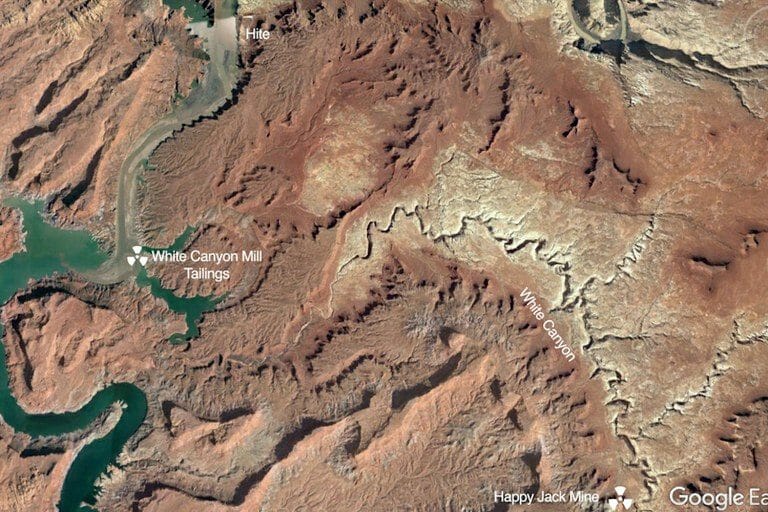The West’s uranium boom brought dozens of mills to the banks of the Colorado River — where toxic waste was dumped irresponsibly.
This article was originally published on The River of Lost Souls and is reproduced by High Country News with permission.
Beneath the murky green waters on the north end of Lake Powell, entombed within the tons of silt that have been carried down the Colorado River over the years, lies a 26,000-ton pile of unremediated uranium-mill tailings. It’s just one radium-tainted reminder of the way the uranium industry, enabled by the federal government, ravaged the West and its people for decades.
In 1949, the Vanadium Corporation of America built a small mill at the confluence of White Canyon and the Colorado River to process uranium ore from the nearby Happy Jack Mine, located upstream in the White Canyon drainage (and just within the Obama-drawn Bears Ears National Monument boundaries). For the next four years, the mill went through about 20 tons of ore per day, crushing and grinding it up, then treating it with sulfuric acid, tributyl phosphate and other nastiness. One ton of ore yielded about five or six pounds of uranium, meaning that each day some 39,900 pounds of tailings were piled up outside the mill on the banks of the river.
In 1953 the mill was closed, and the […]
Full article: The 26,000 tons of radioactive waste under Lake Powell
More about phosphate and water:
Clock Ticking on Florida’s Mountains of Hazardous Phosphate Waste
Chemicals that keep drinking water flowing may also cause fouling
Researchers report new, more efficient catalyst for water splitting

